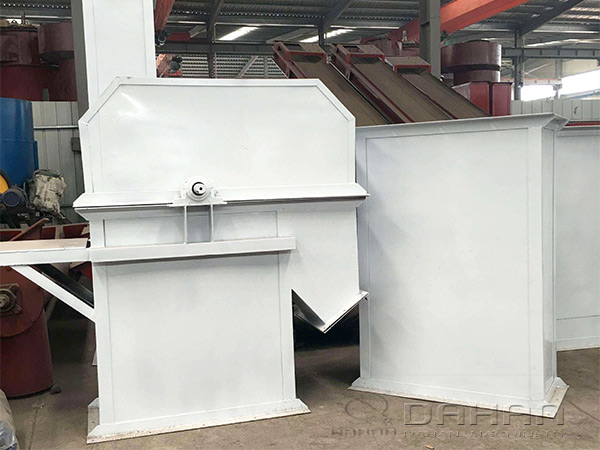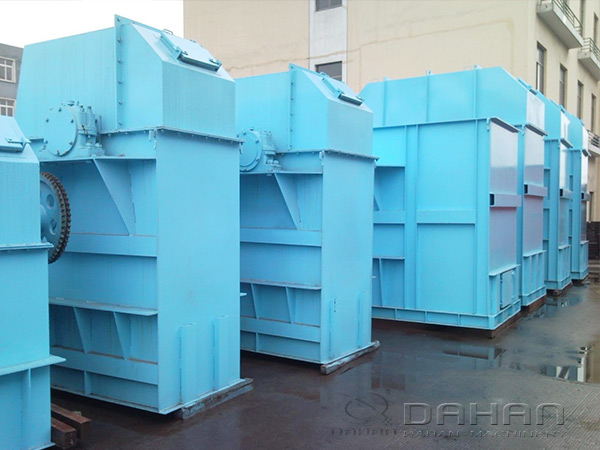Cautions for operation of bucket elevator
Monday August-05 2019 12:00:15
There are 12 points for you:
1. Trial operation, after installation, empty car test operation can be carried out. Empty operation should pay attention to: can not be reversed, there should be no bumping phenomenon. No less than 2 hours of idle operation, no overheating, bearing and speed reducer temperature rise within the prescribed range, after 2 hours of idle operation, all normal can be carried out with load operation.
2. Check the working condition of the equipment when it is running, check whether the conveyor belt is cracked, whether the bucket is damaged, whether the joint of the belt is firm, whether the belt is elongated, run off, etc. when it is shut down.
3. Anti-reversal device is installed at the head of bucket elevator. When the power of bucket elevator suddenly interrupts, reversal is very dangerous to bucket elevator.
4. The suction duct and vent should be installed at the head and bottom of the bucket elevator to ensure that the bucket elevator will not form negative pressure and dust spillover during unloading and feeding. A well-made conveying equipment, its sealing must be reliable.

5. Uniform feeding. It is forbidden to suddenly increase the feeding quantity. Feeding capacity should not exceed the conveying capacity of the hoist. Otherwise, it is easy to cause "stuffy car" accident when the material accumulation at the bottom is serious.
6. Bucket hoist should start without load. Therefore, all materials in hopper should be discharged before each shutdown, and then stop. Strictly abide by the "no-load start, no-load parking" principle.
7. Before the bucket elevator is put into operation, the main parts of the nose, tail and fuselage must be carefully inspected to ensure that all parts meet the requirements, that all baffles and guards are in place and safe and reliable, and that all start-up, control and communication equipment are inspected to ensure that their technical status is normal and good.
8. Maintenance staff should do a good job of regular inspection and regular maintenance. The purpose of maintenance is to deal with the abnormal condition which often occurs in the operation of equipment in time and ensure the normal operation of equipment. It includes replacing some vulnerable parts, adjusting fastening and lubricating oil injection, so that the bucket elevator is always in good condition. In fact, it is an important measure to prevent equipment accidents, improve operation efficiency and prolong service life of equipment. Troubles are handled before they occur through regular inspection and maintenance.

9. In case of blockage accident of bucket elevator, it is necessary to stop feeding immediately, turn off the power and lock it, and after two-way verification to ensure safety, arrange the door between personnel and the lower part of the base to open, remove blocked materials in the machine, and do not pick up materials by hand. After the backup bucket belt is running, feed again.
10. Check the blockage of the machine base, discharge trough and flow pipe regularly. If there are blockages and gaps, remove and repair them in time to avoid dust rising and ensure normal operation.
11. In the course of operation, if there is collision between belt or hopper and shell, if the collision is light, it can be adjusted by adjusting the screw or bearing seat height and other fine-tuning methods. If the collision is intense, the machine should be stopped immediately for inspection and troubleshooting.
12. Bucket hoist safety alarm devices, including belt deviation switch, outlet plugging switch, head wheel bearing temperature alarm switch, stall alarm switch and other safety devices are normal, alarm should be on the scene at the first time to find out the causes and troubleshooting.
